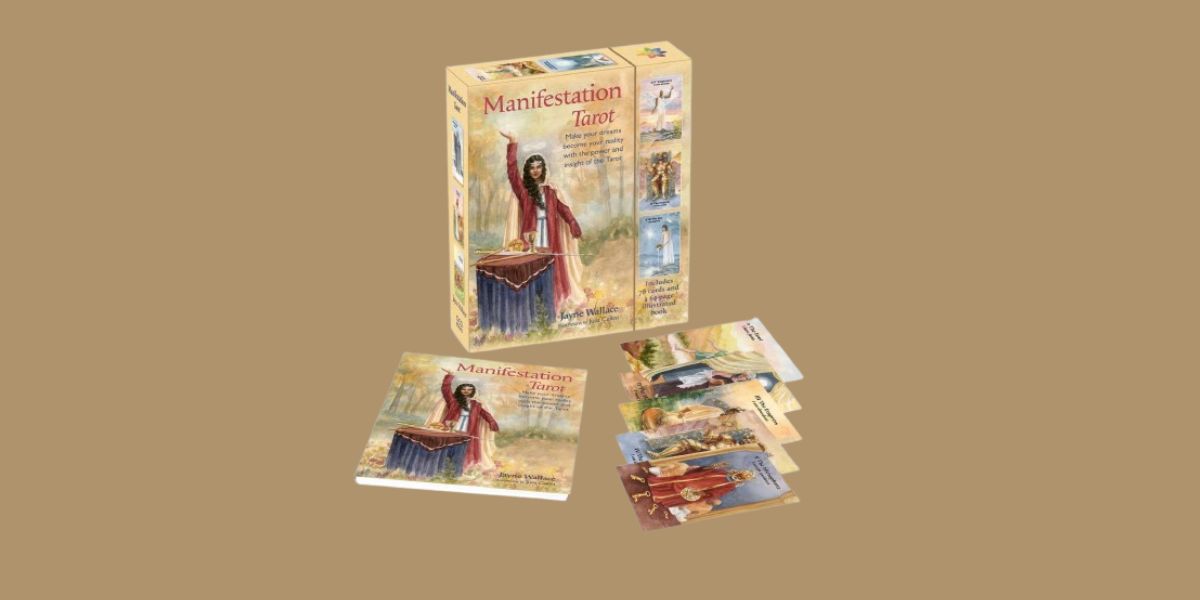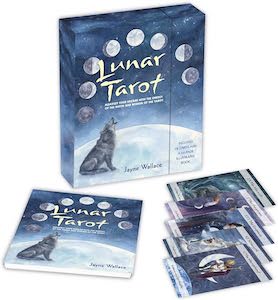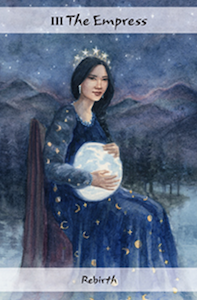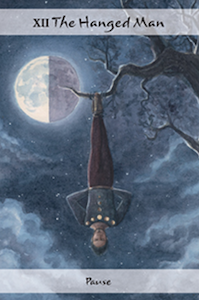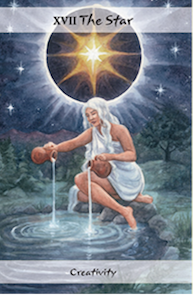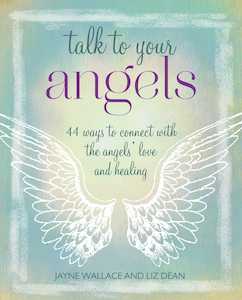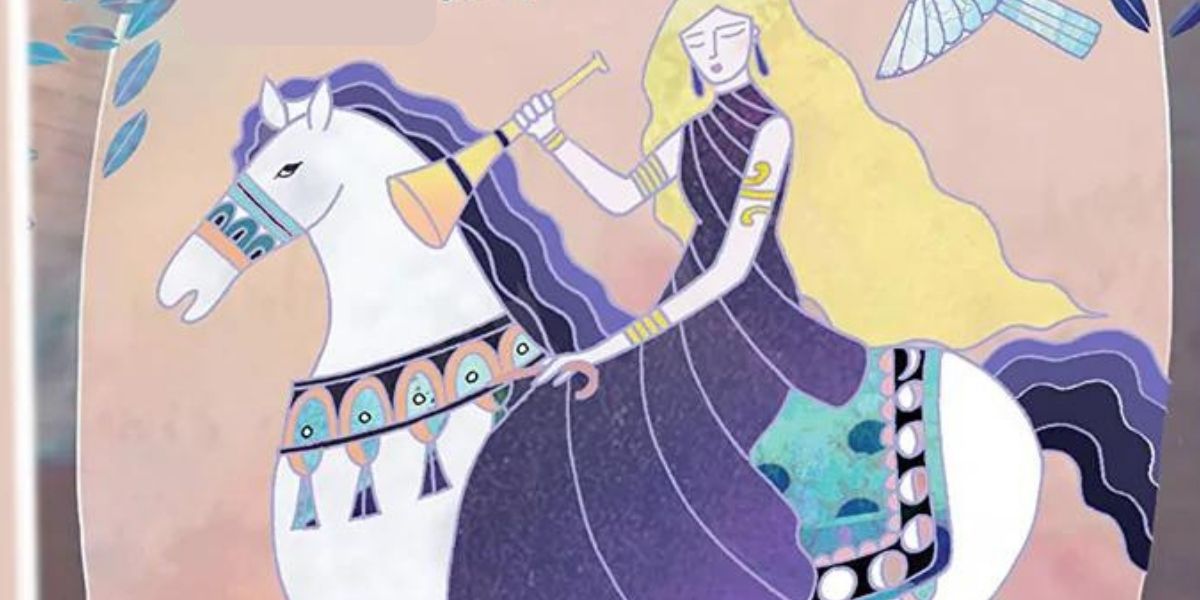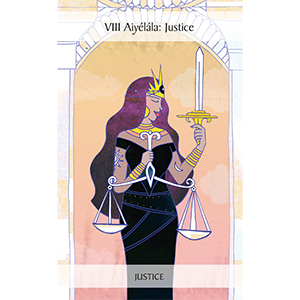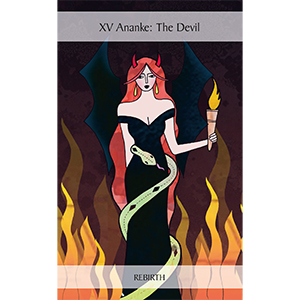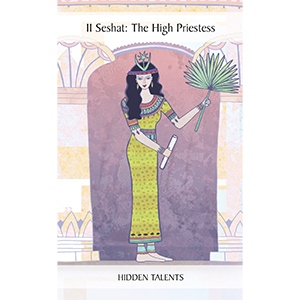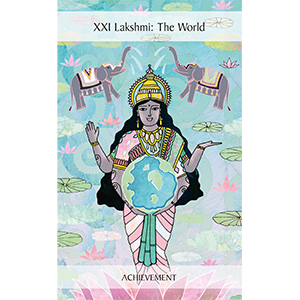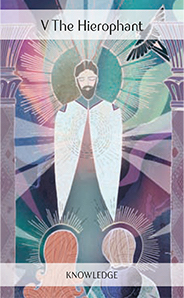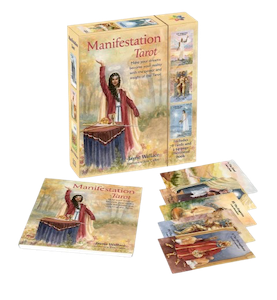
Manifestation Tarot, by Jayne Wallace and illustrated by Julia Cellini
CICO Books, 9781800653733, 78 cards, 64 pages, October 2024
Manifestation Tarot by Jayne Wallace with illustrations by Julia Cellini is a beautiful deck that promises to guide users on a transformative journey of self-discovery and manifestation. I was drawn to this deck by the artwork and idea of adding manifestation to my tarot journey.
As a well-known clairvoyant medium, Wallace brings her wealth of experience and deep understanding of the esoteric arts to create a deck that is both visually stunning and spiritually enriching. Wallace has written for many publications and authored four books, along with appearing on television in both the UK and America. She lives in Essex, UK.
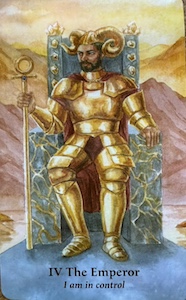
Julia Cellini is an illustrator who works in a variety of mediums, specializing in watercolor and digital art. She finds inspiration in nature and has recently completed a series of works based on deities. She lives in Hawaii and loves exploring the flora and fauna in her tropical home.
The first thing that strikes me about Manifestation Tarot is its breathtaking artwork. Each card is a masterpiece, adorned with vibrant colors and intricate designs that capture the essence of the tarot archetypes. The imagery is a blend of traditional Rider-Waite-Smith symbolism and modern themes. For example, the Magician is pictured as female, the Hanged Man is shown in more modern dress, and the Moon features a domesticated dog and cat.
Wallace has infused each major arcana card with rich symbolism that resonates with the themes of personal empowerment and manifestation. The major arcana “embodies a powerful archetype or lesson that can help clarify your intentions, make informed decisions, and foster a deeper understanding of yourself and the world around you.”1
The minor arcana delves into the “different facets of human experience, influencing our intentions, energy, and the universe’s response to our desires. Together these elements offer an approach to manifesting and the law of attraction.”2 The minor arcana features beautiful, symbolic artwork on the court cards and simple drawings of the suit symbol for all the other cards, much like the Tarot de Marseille.
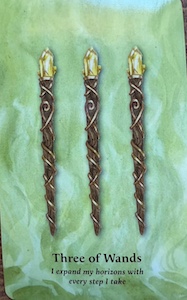
All the cards in this deck also feature the name of the card and an affirmation that recaps the main theme of the card. For example, the Seven of Pentacles shares this affirmation: “Persistence in my efforts will yield security.” The back of the cards features what Wallace calls “The Flower of Manifestation,” a rainbow-colored lotus flower which “represents faith in ourselves.”3
A four-color guidebook provides detailed explanations of each card, along with practical tips on how to use the deck for manifestation and spiritual growth. Wallace begins with a brief introduction, including how to prepare your cards for reading. She also shares tips for reading the cards, including numerous spreads for both basic readings and manifestation. She features keywords, the mantra, and relevant meanings for each card in the deck.
To test drive the cards I chose to do the manifestation Seven Day Challenge. Wallace explains this is a “great way to kick start your connection to the rule of attraction.”4 For this challenge, I separated the major arcana cards from the rest of the deck and chose one card each day for seven days. I made a note of the affirmation on the card and any key information from the guidebook.

Each day I shuffled the major arcana cards and drew one card to be my guiding light for the day. Wallace recommends that you say the mantra or affirmation out loud seven times that day. She explains: “At the end of the week look at the story your cards have told you. The universe has given you a blueprint of where you should be heading in life at the moment.”5
I took an index card and recorded the card and the mantra for each day. It was interesting to see the variety and the compatibility of the messages I received. I am looking forward to trying some of the other spreads, including one she calls “The Staircase of Success,” which asks you to shuffle the cards and then lay down the cards in a stair step fashion as “a way of seeing how your future is going to unfold in a time frame, usually a year, but it can be a shorter or longer.”6
The cards are a standard size, yet the cardstock seems a little light for durability and ease of handling during shuffling and readings. I’m guessing the cards may bend quite easily over time. The deck comes in a beautifully designed, two-part box that protects the cards and the guidebook.
I loved the beauty of the cards and the rich language of the guidebook. Wallace and Cellini have put a new spin on the tarot with this deck. This deck would be great for both seasoned tarot readers and beginners. I’ll use this deck for the next few weeks for my daily one card draw, to benefit from the rich guidance and manifestation tips. I also plan to take it to my next Friday Coffee & Cards group meeting to share with my friends.
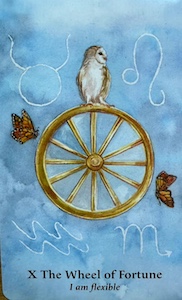
From the Fool, symbolizing new beginnings and infinite potential, to the World, denoting the fulfillment of goals and the completion of cycles, Manifestation Tarot serve as powerful reminders of the innate power within everyone. The interpretations provided in the guidebook are insightful and encourage deep reflection, helping users connect with the core messages of each card.
“The brilliant thing about manifesting is, even if you’re a warrior or a negative Nelly, using this deck you can switch your mindset from scarcity to abundance and supercharge your manifestation potential.”7

PJ Spur is an author, intuitive, spiritual mentor, astrologer, and hypnotist. She does tarot & oracle card readings, natal chart readings, grief coaching, and relationship healing. She also has hosted a weekly “Coffee & Cards” event with her Soul Compass Community for the past four years. Her book Navigating Grief with Grace is available on Amazon. Learn more at www.dearpj.com
